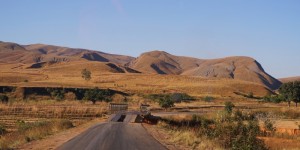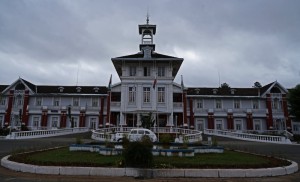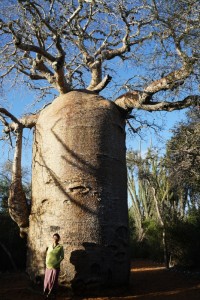July 3-10: Antsirabe, Ranomafana National Park, Ranohira, Isalo National Park, Tulear & Ifaty
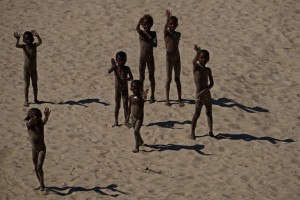 |
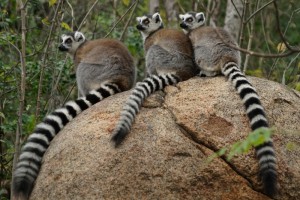 |
Day 9 July 4 Monday: Morondava – Antsirabe (510km)
When I woke up before 6am, I opened the window and could smell the sea. Wow, a long sandy beach was at my doorstep! As the hotel is located next to a fishing village, the beach is littered with fishing boats and pirogues. Many locals were walking towards or coming back from the beach which is also their toilet! Soon I watched the sun rising behind roofs and coconut trees next to the hotel restaurant.
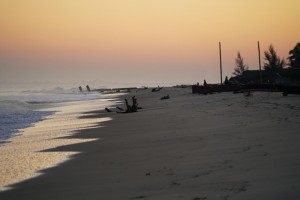 |
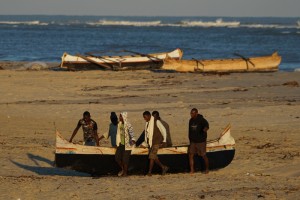 |
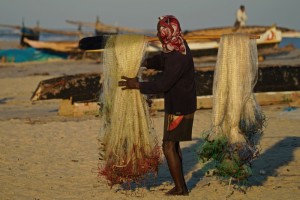 |
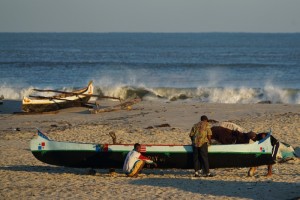 |
I wasted no time. After a quick breakfast, I spent my time strolling along the beach and watching the fishermen. Some were busy getting their boats and nets ready for the sea and a few were repairing their boat or net. I saw some plastic sheets which turn out to be shelters and homes for some of the villagers. A pitiful sight!
We set off before 8am in a minibus on the longest driving day of this trip. We followed RN34 & 35 going through the Betsiriry Plateau and plains of savannah with a lunch stop in Miandrivazo.
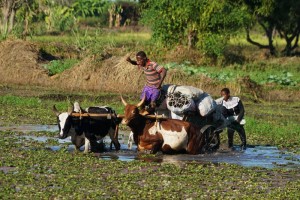 |
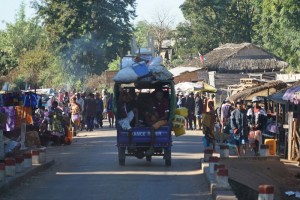 |
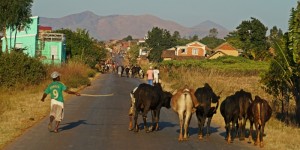 |
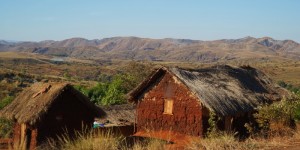 |
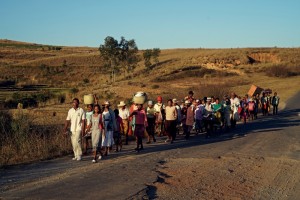 |
We watched sunset from the bus and did not reach Antsirabe till 7pm. We had dinner in a nice local restaurant before checking in Chambres du Voyageur (Eco Lodge). Antsirabe is higher (1500m) and much cooler: I had the heater and my down jacket on in my bedroom.
Day 10 July 5 Tuseday: Antsirabe – Ranomafana (240km)
Antsirable, the third largest city in Madagascar with a population of about 250,000, is known for its industry and high concentration of pulled rickshaws (or pousse-pousse in French). The area was part of the Kingdom of Andrantsay which existed from the early 1600s till its incorporation into the Imerian kingdom in the early 1800s. The first Norwegian missionaries arrived in 1868 and the city was founded by the missionary in 1872 as a hill station to serve as a retreat centre owing to its much cooler climate. The thermal baths were opened in 1917. During the colonial period, the city became the capital of the Fivavahana province. Several buildings including the Hotel des Thermes (1922) and the railway station (1923) date back to the first decade of the 20th century.
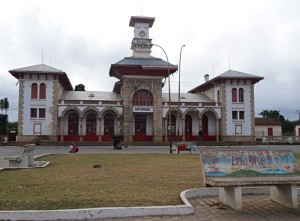 |
We set off at 7:30am and had a short rickshaw ride along the Avenue of Independence which runs from the old train station to the Hotel des Thermes. I had a wonderfully fit rickshaw man who was also 62-year-old. We had a picture together and he was happy when I gave him a tip.
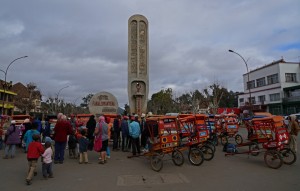 |
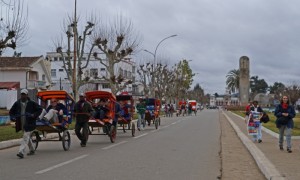 |
I spent almost half an hour in Hotel des Thermes which has a nostalgic atmosphere. A vintage car is parked at the entrance next to the flag poles. The corridor from the reception to the restaurants is lined with historic photos of the city and hotel. showcasing the city’s heyday.
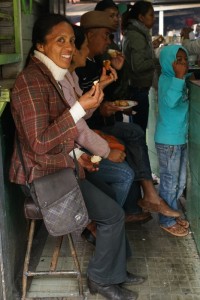 |
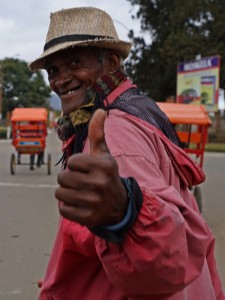 |
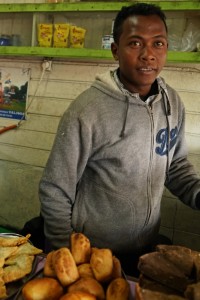 |
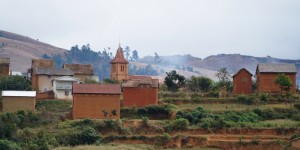 I like the city which looks tidy, clean and relatively prosperous with many well-kept and preserved buildings and churches. Unfortunately, we only had 15 minutes to get water and snacks in a supermarket. I slipped away and quickly walked to a local market located 100m away. The relatively well-dressed locals were having breakfast in the food stalls. I brought two hot rice cakes for 200Ar. I was quick and still managed to get a few bottles of water and biscuits before boarding the bus.
I like the city which looks tidy, clean and relatively prosperous with many well-kept and preserved buildings and churches. Unfortunately, we only had 15 minutes to get water and snacks in a supermarket. I slipped away and quickly walked to a local market located 100m away. The relatively well-dressed locals were having breakfast in the food stalls. I brought two hot rice cakes for 200Ar. I was quick and still managed to get a few bottles of water and biscuits before boarding the bus.
Today, we continued our drive along RN7 with only several toilet and photo stops. To save time, we only had our snack lunch on the bus. The drive through this pretty farming region which produces rice, vegetables and fruit is delightful. The rural landscape is awesome with paddy fields on both side of the valley and hillside and picturesque hamlets with traditional mud houses of Central Highland scattering along the road.
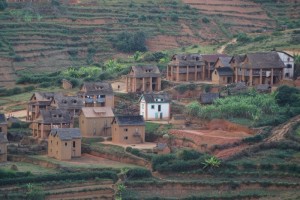 |
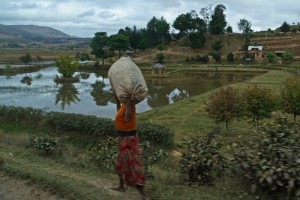 |
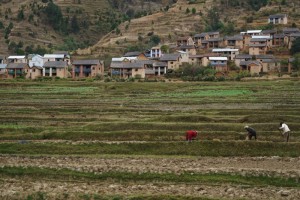 |
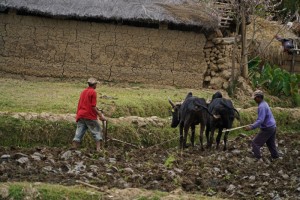 |
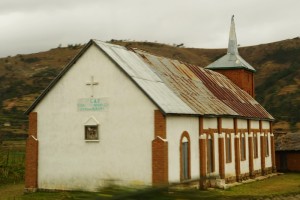 |
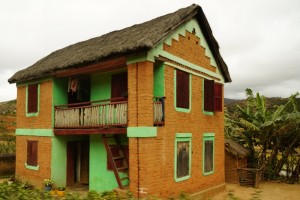 |
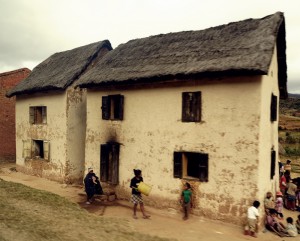 |
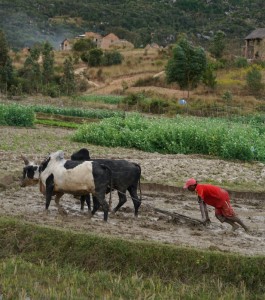 |
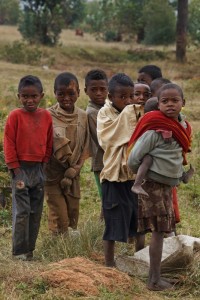 |
The highlight of the day was lemur watching by night near the Ranomoafana National Park. It started to rain when we arrived at the site just before 5pm. We got off the bus and walked for 20 minutes with two guides. It rained so heavily that most of us raced to the bus. We only saw a chameleon. Anyway, we were relieved when arriving at Centrest Sejour at 6pm. I had a nice spacious room and a delicious dinner. Unfortunately I arrived late and left too early to take a good look of the hotel.
Day 11 July 6 Wednesday: Ranomafana – Fianarantosa – Ranohira (300km)
We had another long day that began at 5:45am. After a nice breakfast, we departed for the Ranomafana National Park a World Heritage property with an area of 41,600 hectares of tropical rainforest and many rare species of flora and fauna including the Golden Bamboo Lemur which is only found here.
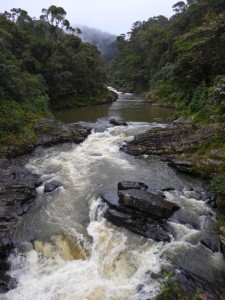 |
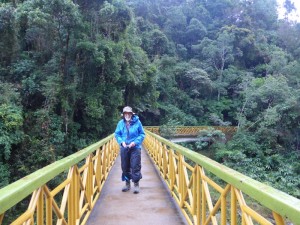 |
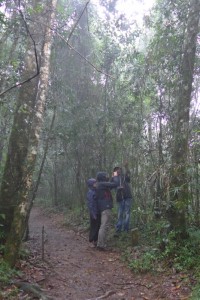 |
We departed at 6:30am and began a 2-hour hike at 7am. It was misty and began to rain soon. The well-marked trail was muddy with steep slopes. We were divided into three groups and our experienced guides soon found us a Golden Bamboo lemur family next to the path. They were busy feeding on bamboo leaves and young shoots and were not bothered by our intrusion. After observing them for over 15 minutes, we moved on. As it was raining without sufficient natural light, I did not bother to take a picture.
We also saw two Eastern Red-fronted lemurs at a tree top. It was raining hard and I had difficulty to see them in the rain. Then we climbed a slippery muddy path to a viewing platform with cover. It’s so misty that nothing could be seen. We hurried down and were back to the car park before 9am. It’s lucky that no one fell or had any mishap despite the slippery path.
Again, we had several photo and toilet stops but no lunch break. The weather turned sunny soon after leaving the park. We were treated with awesome landscape and scenery all the way to Ranohra.
We first passed through Fianarantosa which still runs a train to Manakara on the east coast three times week. The ride has been described as unique and unforgettable. If I were on my own, this ride would be my choice! The city looks vibrant with a picturesque the railway station with a tiled roof and yellow wall. Our bus made a brief stop outside the post office so that some of my friends could send post cards. I did not know when the bus would leave and dared not get off to take a few photos of the city. What a pity!
The second stop of the day was the Anja Community Reserve in Ambalavao. The star attraction is the Ring-tailed lemur which feeds on the leaf and fruit of Mala tree which is plentiful in this reserve. These lemurs eat, drink twice a day from a nearby pond and sleep a lot. What a wonderful and stress-free life! We spent an hour and a half watching these cute and photogenic animals in their natural habitat.
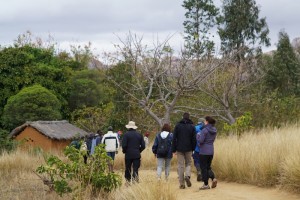 |
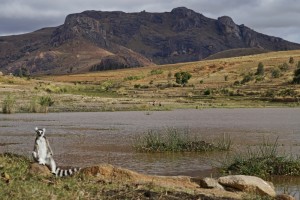 |
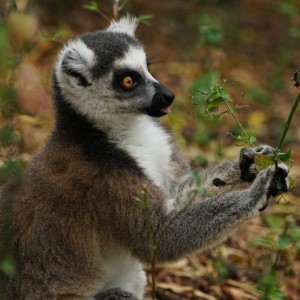 |
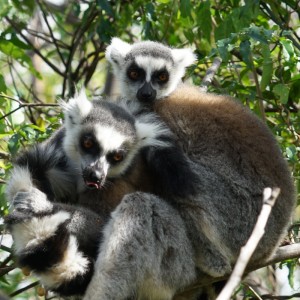 |
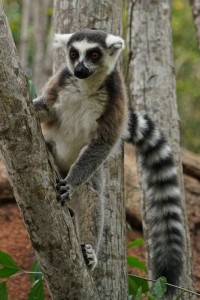 |
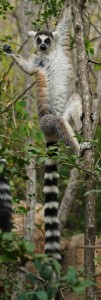 |
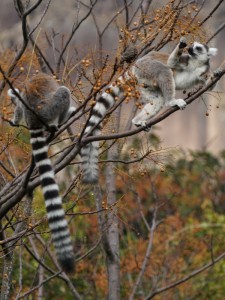 |
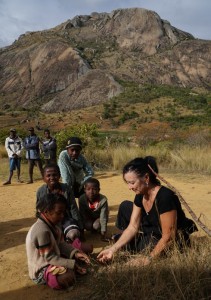 |
We were driving on a plateau and the landscape resembles those of the wild west of America. Sunset over an expansive plateau is impressive. We had a ten-minute break to watch sunset before heading to the Isalo Ranch. We arrived at 6:30pm and had dinner at 7pm.
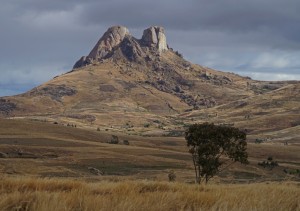 |
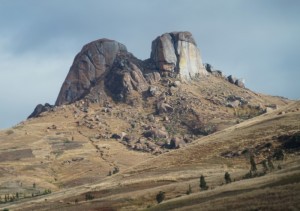 |
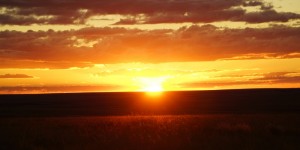 |
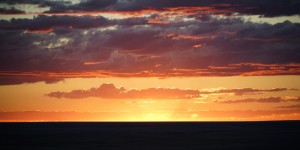 |
Day 12 July 7 Thursday: Isalo National Park
We spent a day in the Isalo National Park which has an area of 815km² with many hiking trails.It is known for its wide variety of terrain including sandstone formation, deep canyons, palm-lined oases and grassland. At 7:30am, we set off and had a 3-km hike to a natural swimming pool. I was in the last group that had the best guide who speaks good English. He showed us lots of plants including the elephant foot plant.
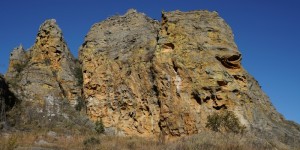 |
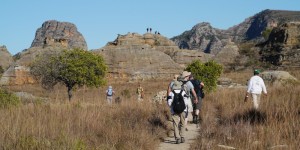 |
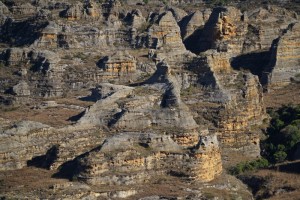 |
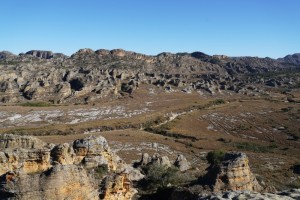 |
He also explained the burial practice of the Bara people. He pointed at a cave near the walking path which serves as a temporary grave where a coffin would be kept for three years. At the end of that period, the bones would be cleansed and wrapped in a shroud which would be placed in another coffin before being taken to a sacred place / cave. He pointed at a crack high up on the hillside which has a big cave tomb. A family tomb may be the resting place for as many as 20 members depending on its size.
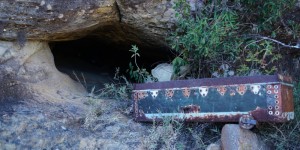 |
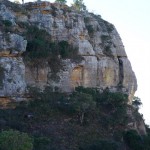 |
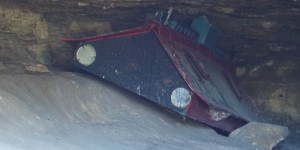 |
The trail to the natural pool is easy and well-trodden. The garden of Eden with fine white sand, palm trees, waterfalls and a natural pool is breathtaking. I was the last person to arrive: everyone already had a swim. As a result, I had the pool to myself! We followed the same track all the way back to the car park. The landscape looked dull in strong sunlight.
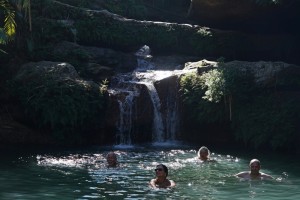 |
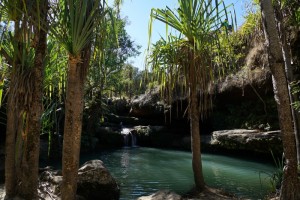 |
By 11:20am, we were on our way to another area of the park for picnic followed by a 45-minute hike at the canyon along a river to the Black Pool. The 15-minute hike to the picnic area is relatively easy. The area has become an open air restaurant with many set tables with table-cloth and a kitchen area with several permanent stoves allocated to different local operators from the community. Visitors have to order lunch a day before so that the operators can buy ingredients the next day and carry everything to the site. Nine of us had a 3-course lunch for 20,000Ar: we had cooked vegetable salad as starter, pasta as the main course and fresh fruit as dessert. The food was fresh and delicious. I am glad that the villagers can earn a decent living through sustainable tourism by guiding and cooking for visitors.
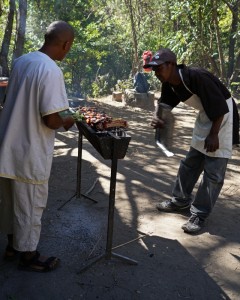 |
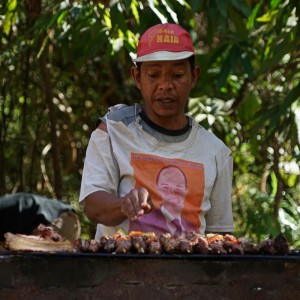 |
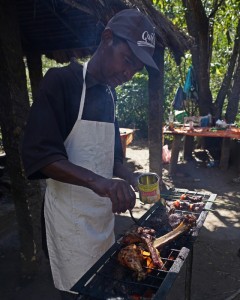 |
While waiting for the lunch, I saw three types of daytime lemurs namely the Ring-tailed lemur, Verreaux’s Sifaka and Red-fronted Brown lemur.
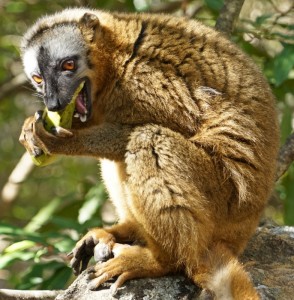 |
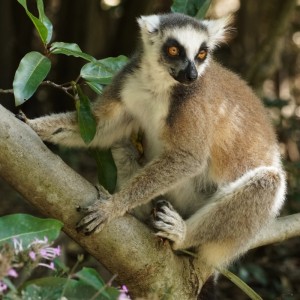 |
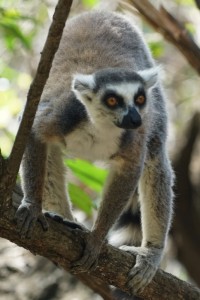 |
After lunch, five members returned to the hotel while 11 of us had an incredible hike through an amazing narrow and green canyon with vertical walls rising to 100-200m. The trail which ends at the Black Pool is spectacular but difficult. A river runs through the lush green canyon and I followed a narrow path which goes up and down. I crossed the river several times without getting the feet wet as boulders and sandbars provide natural bridges and useful stepping stones. I took extra caution and sometimes walked with my hand on the canyon wall or a boulder or a tree. I was glad to reach the pool without falling!
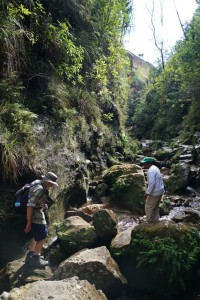 |
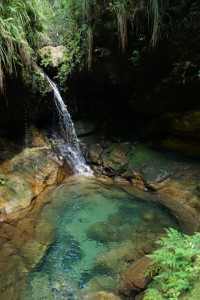 |
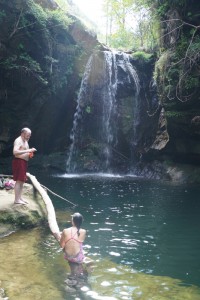 |
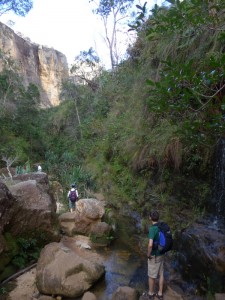 |
The guide said the group had to leave in 15 minutes’ time. So I did not bother to get change and missed a chance for a second dip. The way back was easier since I knew the trail well. We were back in the car park by 3:30pm. I could not understand why we had to rush!
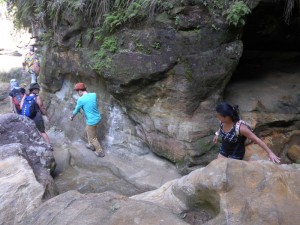 |
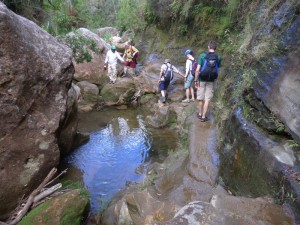 |
As the minibus had a mechanical problem, Sol arranged a taxi-brousse (bush-taxi) and nine of us piled in (three in the front and back row and four in the middle row). Sol said that normally it would take as many as 15 passengers. Another African experience! We got back to the hotel after 4pm. Tonight we celebrated Angie’s birthday.
Day 13 July 8 Friday: Ranohra – Tulear – Ifaty (270km)
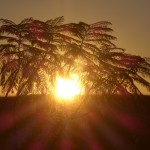 I got up early to watch sunrise. We did not start till 8am and had a relatively comfortable and short driving day on RN7. The landscape is different with forest, flat-topped mountains, savanna grassland with some primitive hamlets scattered along the road.
I got up early to watch sunrise. We did not start till 8am and had a relatively comfortable and short driving day on RN7. The landscape is different with forest, flat-topped mountains, savanna grassland with some primitive hamlets scattered along the road.
When we arrived in Ilakaka, we saw dozens of people, young and old, women and men panning for gemstones in the river. Group of men, both local and overseas, were hanging around along RN7. As the town is not a safe place, Sol told us to take photos from the bus and should not open the window. Apparently, the cost of living here is higher than in Tana and the rate of HIV/AIDS is the highest in the country. We saw similar phenomenon when passing over the next few streams in the area.
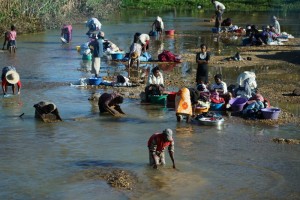 |
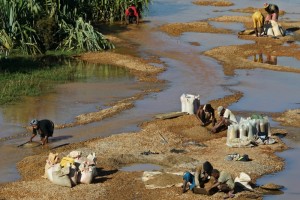 |
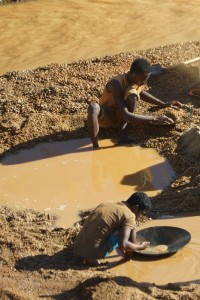 |
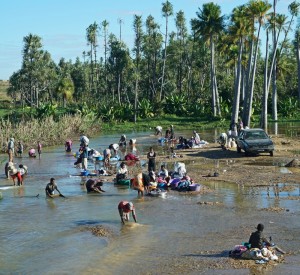 |
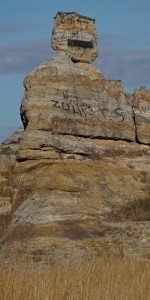 |
Along the road, there are a number of painted tombs from the Mahafaly and Antondry tribes.We had a few photo and toilet stops and arrived in Tulear for lunch around 1pm. I had seafood skewer with fish and shrimp which were most delicious. Then we drove for an hour and arrived at the Hotel de la Plage at 3:30pm. I had a lovely bungalow by the beach.
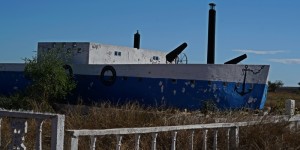 |
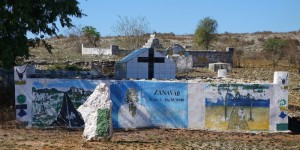 |
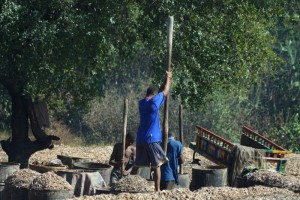 |
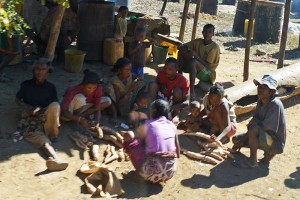 |
I walked along the beach for about 2km and reached the fishing village at Ifaty. As the sea was rough, few boats had gone fishing in the lagoon. I took many pictures of the pirogues on the beach. Many kids came up asking for sweet and gifts. Some attempted to grab my bag in a playful way. I shouted ‘Stop’ and told them to study and work and not to beg.
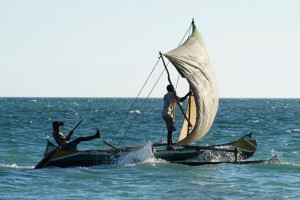 |
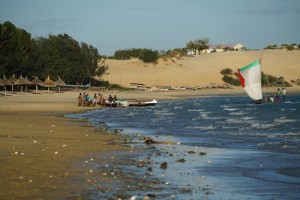 |
I headed back to the hotel shortly after 4:30pm as it would not be safe to walk on my own after dark. I was back in my bungalow in time to watch a gorgeous sunset on my door step.
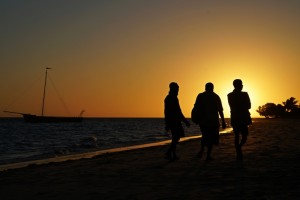 |
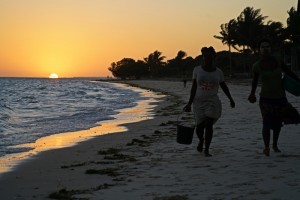 |
Day 14 July 9 Saturday: A Leisure Day
We had the most relaxing day of the entire trip. I got up before 6am and watched sunrise. But as the hotel is not east-facing, the sunrise was nothing special. Henry, Joyce, Miranda and I had signed up for a snorkelling trip in the morning. But the strong wind and poor sea condition ruined our plan. At 9am, I joined a lagoon cruise in a pirogue with two Ians, Janet and Henry (€7 each). The pirogue made from a single trunk has six seats with a boatman standing in the front and another at the back steering the boat with an oar.
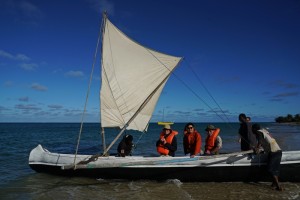 |
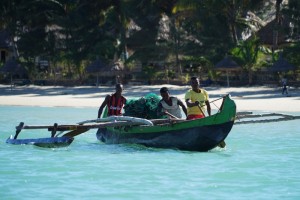 |
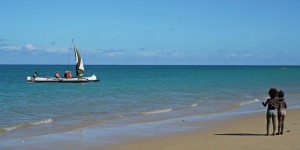 |
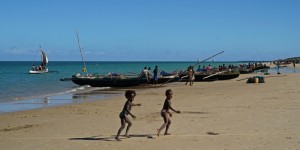 |
We had strong head wind and the boat was not moving fast. The cruise was pleasant but slow and a bit boring. I therefore asked the boatmen to drop me off in the fishing village as I would like to explore it on foot. Henry joined me and we walked through the village, looking at the street stalls selling fried fish, roast maize, steamed sweet potatoes, spaghetti, vegetables etc.
The village with 2-3,000 inhabitants seems crowded. There are hundreds of small flimsy huts with hatched roofs. Children once again ran after us asking for sweet and gifts. I told them stop begging: they should study for their future. We started the walk at 10:30am and were back in the hotel an hour later.
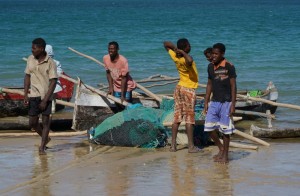 |
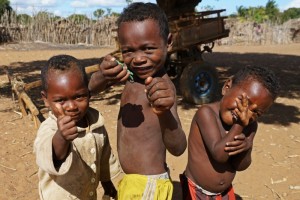 |
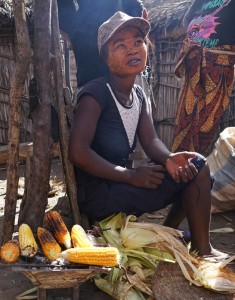 |
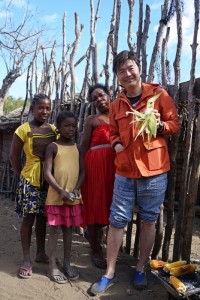 |
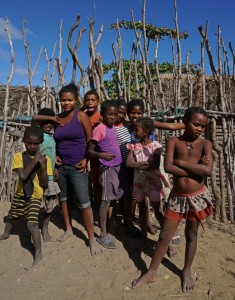 |
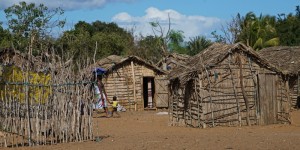 |
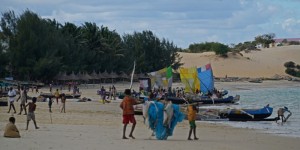 |
Miranda, Joyce, Henry, Ian and I booked a car that would take us to a spiny forest (€6 pp). We left at 3pm and had a wonderful visit for over two hours (entrance fee with a guide 18,000Arpp). Spiny plants found on poor substrates with low, erratic winter rainfall, are woody but distantly related to the cacti. Some 44,000km²in the country is covered with this habitat. There are many baobab trees in the forest. We watched the sun setting behind a few baobab trees.
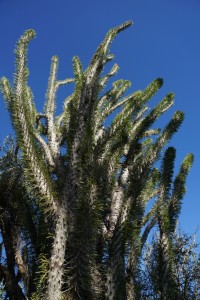 |
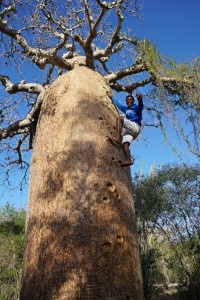 |
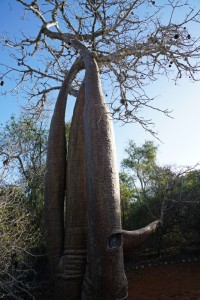 |
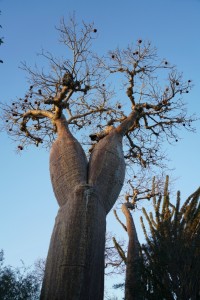 |
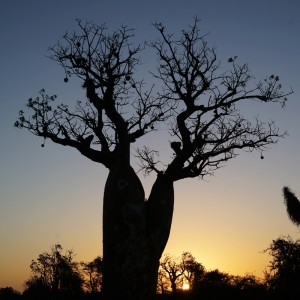 |
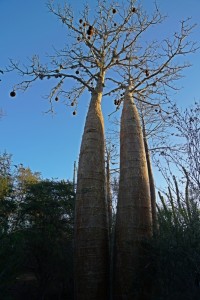 |
At 6:30pm, we were entertained by a local choir with 20 singers, dancers and musicians. We were invited to join them at the end of their performance. Before dinner, Ciaran, a Scot and the youngest member of the group, gave a touching and eloquent speech on behalf of the group thanking Sol for his professional service and support. Sol was moved and said we were unusual, well-travelled and understanding. He thanked us for visiting and enjoyed introducing his country to us.
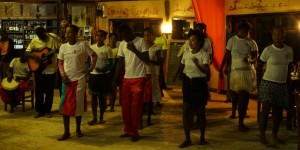 |
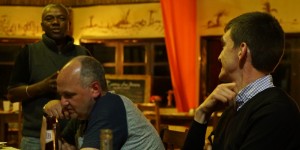 |
Day 15 July 10 Sunday – Tulear – Antananarivo (By Air)
We had an early start with luggage ready for collection by 4:45am and departed for the airport at 5:30am. We arrived at the airport an hour later and the plane took off about 9am. The distance between Tulear and Tana is 630km. As the plane had to stop at Fort Dauphine, we did not arrive in Tana till 11am and were back in Hotel Belvedere around 1pm. We said ‘good-bye’ to Sol. (Aerial photos: top two are areas close to Tulear; bottom two are outskirts of Tana)
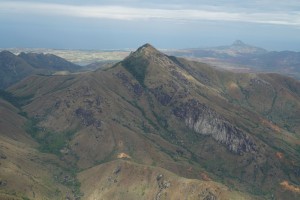 |
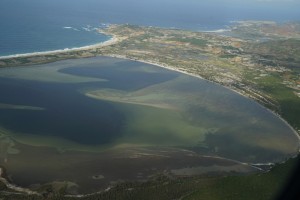 |
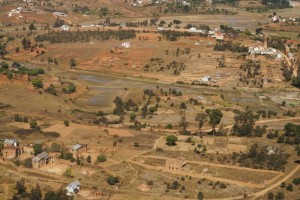 |
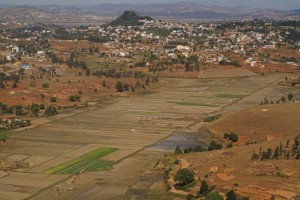 |
I longed for Vietnamese food and Hana and Miranda joined me to have a late lunch at the Saigon Restaurant. We had four delicious dishes and paid 19,000Ar each. Fantastic value!
On the way back to the hotel, we walked by an attractive boutique shop selling local products including foie gras and hand-made chocolate. Three of us went wild and spent over 400,000Ar slapping up all the chocolate bars and bought a dozen of canned foie gras. I was so full that I skipped dinner. But I went to the restaurant to say good-bye to my friends.
END of GROUP TOUR


